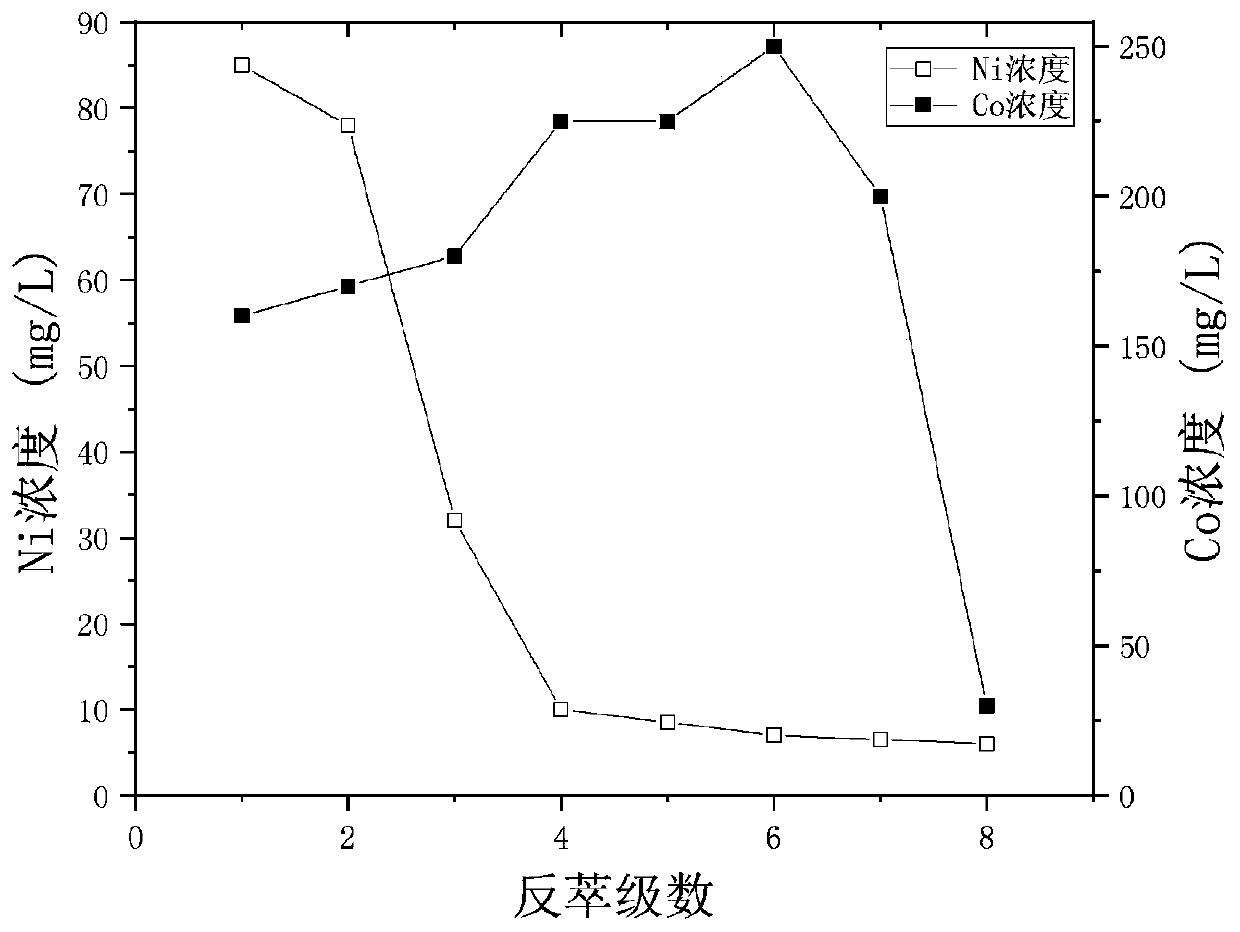Method for separating and recycling cobalt and nickel from waste lithium-ion battery
A lithium-ion battery, separation and recovery technology, applied in the direction of battery recovery, waste collector recovery, recycling technology, etc., can solve the problems of high economic cost, secondary pollution, low separation efficiency, etc., and achieve efficient recycling and economical recycling cost, the effect of avoiding secondary pollution problems
- Summary
- Abstract
- Description
- Claims
- Application Information
AI Technical Summary
Problems solved by technology
Method used
Image
Examples
Embodiment 1
[0037] In this embodiment, a lithium cobalt oxide battery is taken as an example to describe a method for separating and recovering nickel and cobalt from waste lithium ion batteries.
[0038] Step 1. Manually disassemble the lithium cobalt oxide battery that has been discharged through the discharge process. The obtained positive electrode material is first washed with absolute ethanol for 3 to 5 times, then rinsed with a large amount of water, and then dried at 60°C for 12 hours to obtain a dry Cathode material.
[0039] Step 2, put the dried positive electrode material into the Erlenmeyer flask for leaching in a water bath constant temperature shaking box at 40°C. The specific operation is: fill a series of 250mL Erlenmeyer flasks with 180mL 5mol / L formic acid and volume fraction 8vol.% hydrogen peroxide solution, the volume ratio of the two is 6:1, then put the dry positive electrode material into the Erlenmeyer flask, and then put all the Erlenmeyer flasks into a constant...
Embodiment 2
[0048] Compared with Example 1, this implementation separates and recovers nickel and cobalt from the nickel-cobalt-manganese ternary battery, and all other conditions are the same. The concentrations of nickel and cobalt in the aqueous phase at the outlet of the extraction section were 243.8mg / L and 4.9mg / L respectively, and the nickel yield was 91.8%; the concentrations of cobalt and nickel in the aqueous phase at the outlet of the stripping section were 285.3mg / L and 10.2 mg / L or so, the cobalt yield can reach 97.2%.
Embodiment 3
[0050] Compared with Example 1, the extraction agent used in this implementation is P507, wherein the volume percentage of P507 and kerosene is 20:80, and the rest of the conditions are the same. The concentrations of nickel and cobalt in the aqueous phase at the outlet of the extraction section are about 247.5mg / L and 4.2mg / L respectively, and the nickel yield is 93.2%; the concentrations of cobalt and nickel in the aqueous phase at the outlet of the stripping section are respectively 287.7mg / L and 9.6 mg / L or so, the cobalt yield can reach 98.0%.
PUM
 Login to View More
Login to View More Abstract
Description
Claims
Application Information
 Login to View More
Login to View More - R&D
- Intellectual Property
- Life Sciences
- Materials
- Tech Scout
- Unparalleled Data Quality
- Higher Quality Content
- 60% Fewer Hallucinations
Browse by: Latest US Patents, China's latest patents, Technical Efficacy Thesaurus, Application Domain, Technology Topic, Popular Technical Reports.
© 2025 PatSnap. All rights reserved.Legal|Privacy policy|Modern Slavery Act Transparency Statement|Sitemap|About US| Contact US: help@patsnap.com


